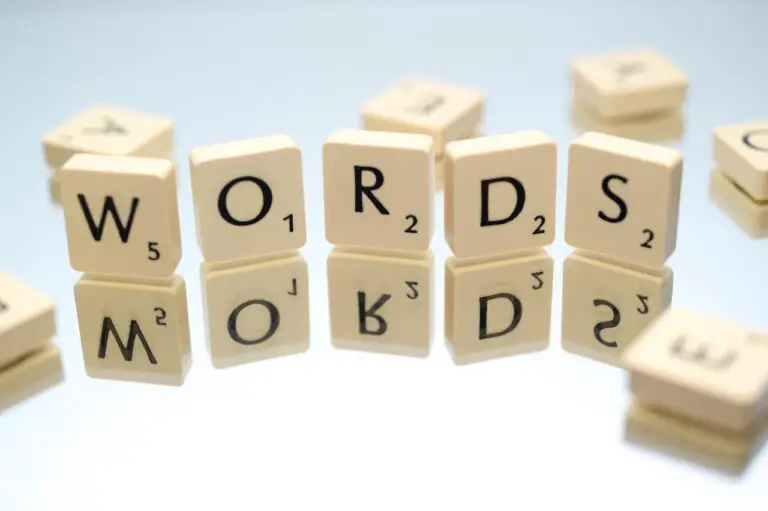There are dozens of memorisation techniques available to EFL/ESL classes, including images, mnemonics and gestures, but one method is rarely mentioned. I’m talking about sounds and audio hooks.
For whatever reason, one of our most important senses, hearing, is neglected when it comes to vocabulary teaching. I think we’re missing out on a powerful tool.

In this article, I’m going to explain why sounds and audio hooks are powerful memorisation techniques, and then give some practical guidance on how to use them in EFL/ESL classes.
Using sounds and audio hooks is step 5 in my Best Method to Improve EFL/ESL Students’ Vocabulary: 9 Steps guide, so make sure to read that article in full to get the bigger picture.
Sounds create lasting neural connections
We’ve all heard about people with photographic memories and those who say they are “visual learners”. Images are a huge part of memory recall. They’re proven to work. In fact, I’ve written a post on how to use them for EFL/ESL classes: How to Use Images for Deep Vocab Memorisation in EFL/ESL.
But have you ever heard of auditory memory?
Probably not. I hadn’t for many years until I started using it.
It’s essentially the same as visual memory, but with sounds instead of pictures.
The equivalent of photographic memory is someone who can remember pieces of music in great detail and play them over in their head – just like Beethoven and other great composers.
Sure, most people can’t do this. But I’d say almost everyone can remember specific sounds from their lives – the bark of next door’s dog, the school bell, and the intro to their favourite song.
The brain stores auditory information just like it does images and other senses.
When we’re teaching vocab to EFL/ESL students, this is a great opportunity to strengthen recall.
The idea is to create multiple neural routes to the desired information. Think of it like a road network, where we need to get to a destination, in this case, the English word.

The more roads available, the higher chance we have of arriving. If one road falls apart, or gets jammed up with traffic, then we have an alternative route to get us there.
And often, the audio route is fastest. Think about those words which don’t connect well to an image or gesture?
For example, “sarcasm”. How do you clearly depict that in a picture? Or with a hand movement? It’s possible, at a push, but saying the word in a sarcastic voice conveys all the meaning through tone alone.
In short, we should use every aspect of the brain’s processing machinery to create long-lasting memorisation. That includes images, gestures, emotions, AND sounds.
How to use sounds and audio hooks for vocab memorisation
Since this method is far less common than others, there are fewer tried-and-tested techniques. As a result, everything here is what I’ve learned from my own teaching.
1. Use tone to convey meaning
Above, I gave the example of saying the word “sarcasm” in a sarcastic voice. The tone conveys the meaning. It connects the concept with the sounds of the pronounced word.
There are plenty of other similar examples:
Say “happy!” in a happy tone. “Computer” in a robot voice. How about screaming the word “scream”?

With kids, you can have plenty of fun doing this, and make a lot of noise in the process.
Of course, you can’t do this with every word. Trying to say the word “table” in a tone that conveys its meaning is impossible.
2. Accompany the word with an associated sound
Instead of saying the word in a certain way, say it normally, then add a sound after.
“Ambulance” – add a siren
“Disgusting” – say ewwwww,
“To relax” – make a sigh of relief.
Often, you can combine the sound with a gesture for double the power.
To learn more about gestures, check out my article How to Use Gestures to Embed Vocab in EFL/ESL + 2 Games.
And don’t limit yourself to sounds made by the mouth. Clapping, clicking, drumming on the table, stamping your feet and tapping a pen on the table are all great audio hooks. Be creative.
3. Use cultural references and famous voices
This technique requires you to know the interests of your students. The aim is to connect familiar sounds and voices to new vocabulary.
Here are two examples:
1. Your student loves Nintendo games like Super Mario. Those games are full of unique and memorable sound effects, like when Mario gets the mushroom and grows. Connect these sounds to words. For example, if you’re teaching words like “grow” or “increase” or “expand”, you can make the Mario sound.
2. Your students are obsessed with Harry Potter. They always say the classic quote “It’s LeviOsa, not LeviosAR!” Use Hermione’s voice to emphasise the correct pronunciation of tricky words like picture “It’s PIC-cha, not pic-TOO-ray!”
Take words from songs, TV shows, memes – any audio media the students consume.
Sounds good, right?
Try these methods and figure out what works for you and your students. Experiment and adapt. You may find a technique which nobody has used before!

Some students will love sounds and audio hooks, while others may not enjoy them so much. That’s fine. We all learn in different ways, with our brains favouring certain types of information.
With a variety of methods, you cover the full spectrum of students. Only focusing on visuals excludes those who prefer auditory information, so by adding this tool to your repertoire, you’ll be helping more of your class excel at learning vocabulary.
The next step in the process is creating positive moments that stick in students’ memory. To find out how, read How to Teach Vocab in EFL/ESL with Memorable Moments.
For all the information you could ever possibly want on teaching EFL/ESL vocab, take a look at all my articles on the topic.
BIG OVERALL GUIDE: Best Method to Improve EFL/ESL Students’ Vocabulary: 9 Steps
Why EFL/ESL Students Forget Vocab: Causes and Solutions
How to Elicit Vocabulary in EFL/ESL: 7 Effective Activities
What Vocab Should You Teach in EFL/ESL: Organic acquisition
How to Use Images for Deep Vocab Memorisation in EFL/ESL
How to Use Gestures to Embed Vocab in EFL/ESL + 2 Games
How to Test EFL/ESL Vocabulary: Best assessment methods
Sounds and Audio Hooks for Lasting Memorisation in EFL/ESL
How to Teach Vocab in EFL/ESL with Memorable Moments
Supercharge EFL/ESL Vocab With Spaced Repetition (Anki)
How to Make Vocab Last Forever: Reinforcing connections
9 High Energy EFL/ESL Games for Boosting Vocabulary





